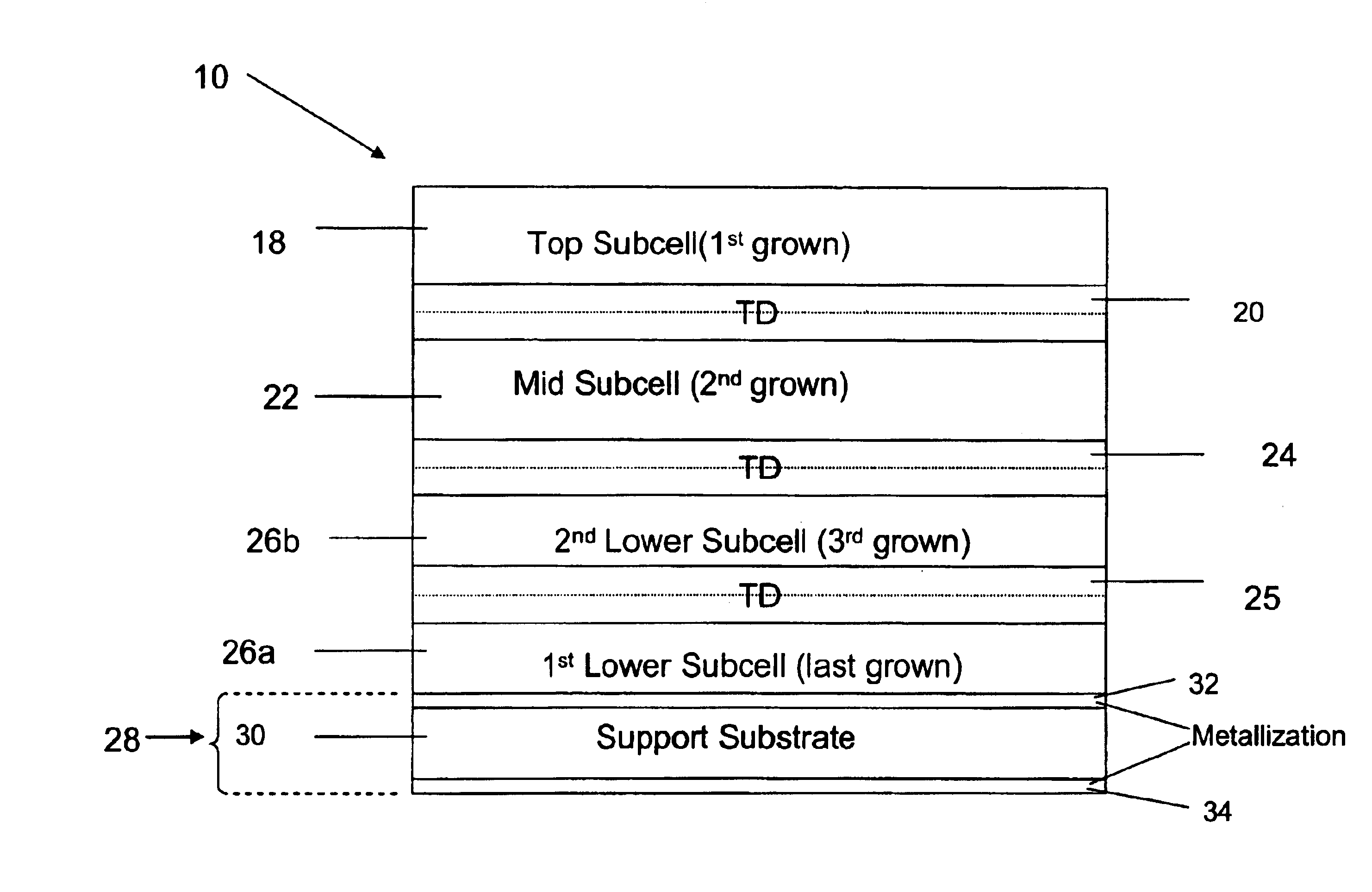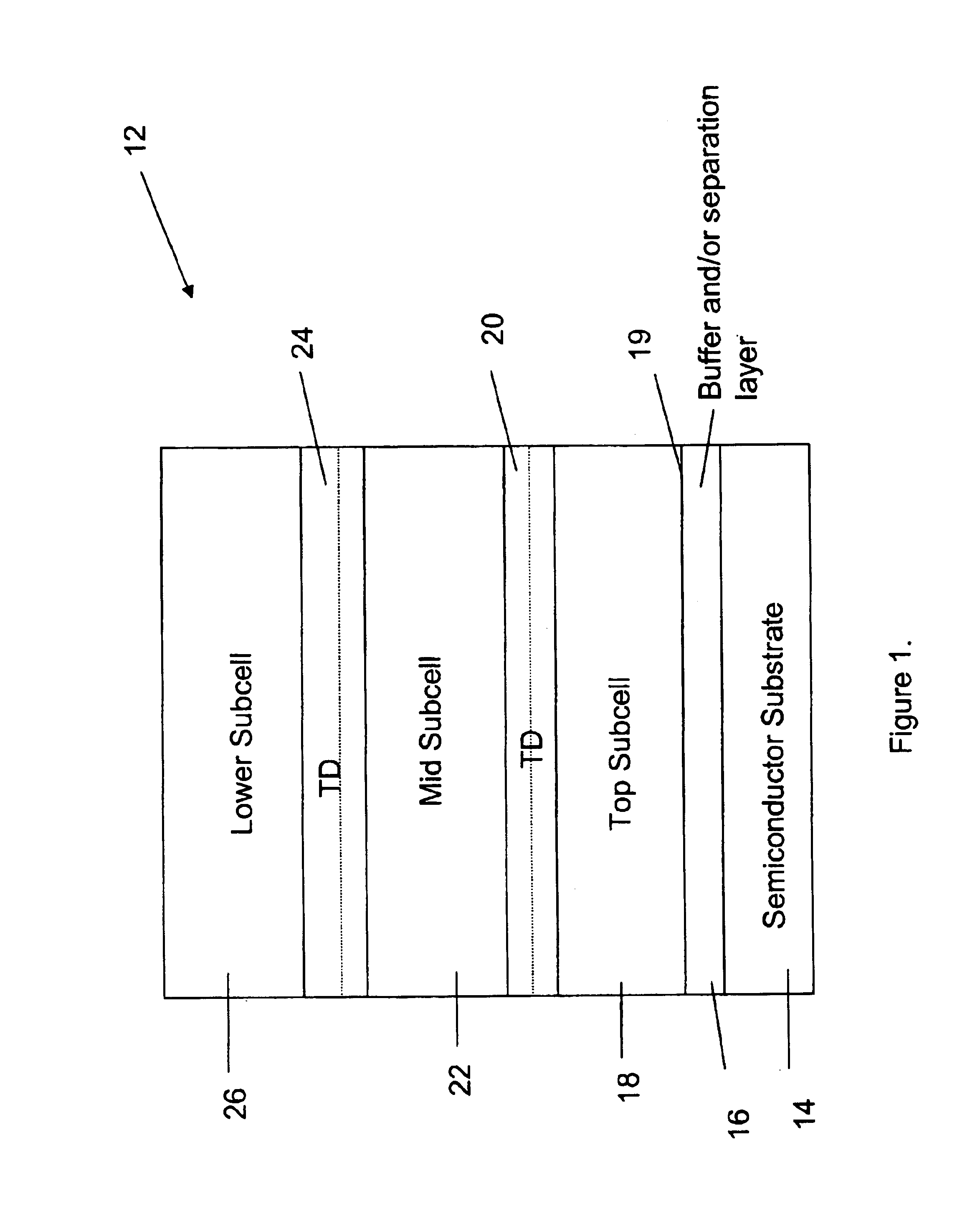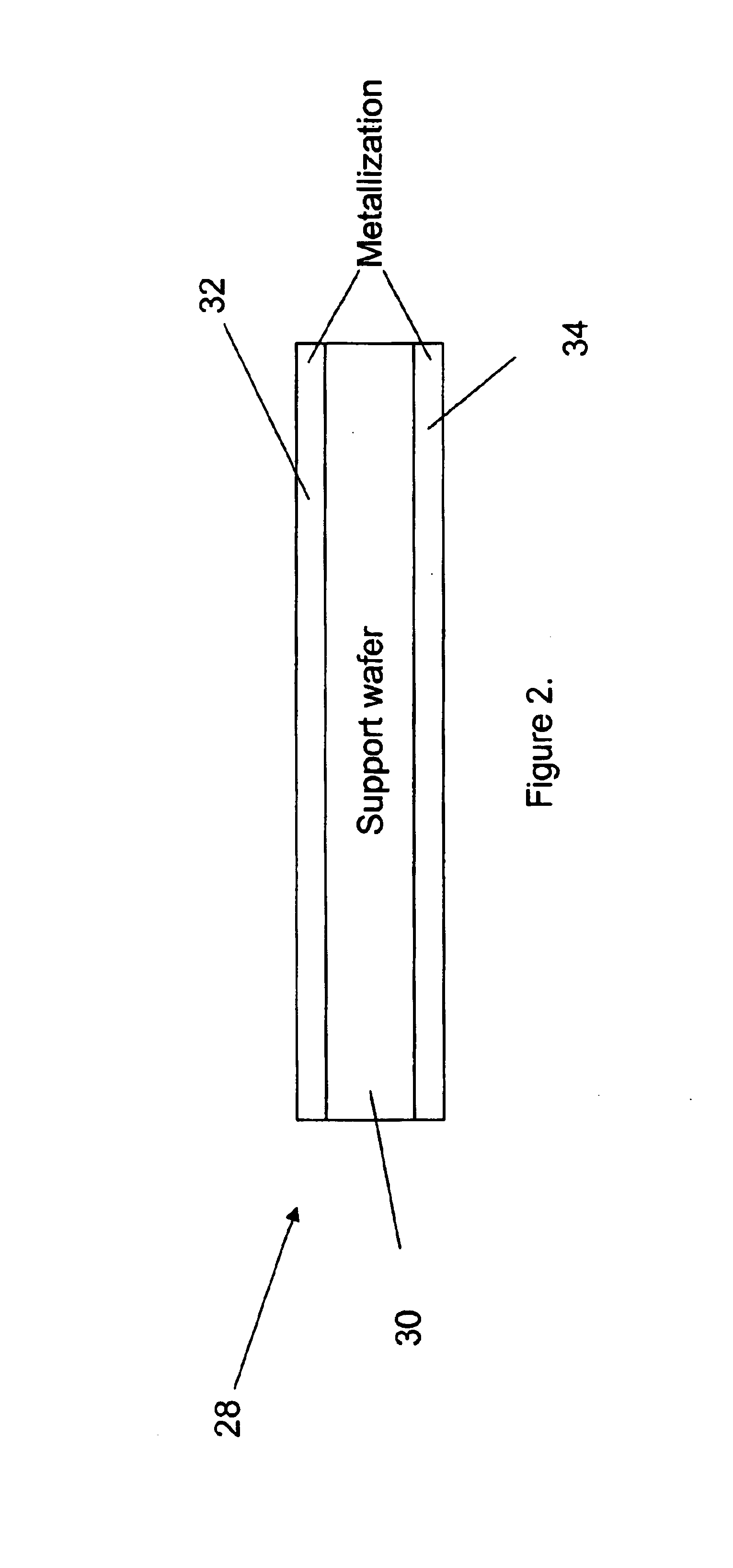High efficiency, monolithic multijunction solar cells containing lattice-mismatched materials and methods of forming same
a solar cell, high efficiency technology, applied in the direction of basic electric elements, electrical apparatus, semiconductor devices, etc., can solve the problems of reducing the performance of the upper subcell, reducing the quality and reducing the performance of the lower subcell, so as to achieve a wide range of performance and reduce strain. , the effect of adjusting or optimizing the performan
- Summary
- Abstract
- Description
- Claims
- Application Information
AI Technical Summary
Benefits of technology
Problems solved by technology
Method used
Image
Examples
Embodiment Construction
[0026]Multi-junction solar cells may comprise a plurality of subcells that convert solar radiation into electrical energy. In various preferred multi-junction solar cells, the different subcells absorb different spectral components of the solar spectrum such that a large portion of the spectrum is absorbed. In this manner, the conversion of optical energy into electrical energy is thereby increased.
[0027]The subcells preferably comprise semiconductor material having different band gaps with correspondingly different spectral absorption cutoff wavelengths. The plurality of subcells are preferably stacked such that light is absorbed by each of the subcells. In particular, in certain embodiments, higher band gap layers are stacked on lower band gap layers such that shorter wavelength light is absorbed by the higher band gap layers and longer wavelengths are transmitted therethrough. These longer wavelengths are absorbed by the lower band gap layers beneath the higher band gap layers.
[0...
PUM
 Login to View More
Login to View More Abstract
Description
Claims
Application Information
 Login to View More
Login to View More - R&D
- Intellectual Property
- Life Sciences
- Materials
- Tech Scout
- Unparalleled Data Quality
- Higher Quality Content
- 60% Fewer Hallucinations
Browse by: Latest US Patents, China's latest patents, Technical Efficacy Thesaurus, Application Domain, Technology Topic, Popular Technical Reports.
© 2025 PatSnap. All rights reserved.Legal|Privacy policy|Modern Slavery Act Transparency Statement|Sitemap|About US| Contact US: help@patsnap.com



